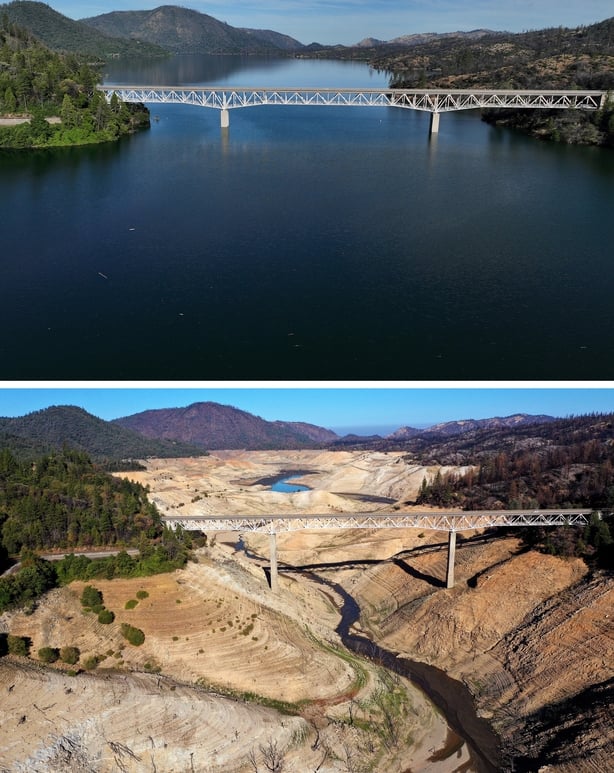A very wet winter has left California's reservoirs looking healthier than they have for years, as near-record rainfall put a big dent in a lengthy drought.
A series of atmospheric rivers, which are high altitude ribbons of moisture, moved across the western United States, dousing a landscape that had been baked dry by years of below-average rain.
The state's 40 million residents had chafed under repeated warnings to save water, with restrictions on irrigating gardens that left lawns dead or dying.
Vegetation dried up, with hillsides a parched brown, and ripe for wildfires.
Reservoirs held just a fraction of their capacity, with shorelines retreating to reveal dust, rocks and the remains of sunken boats.
But then the winter roared into action, and trillions of gallons of water fell from the skies.
Rivers and creeks that had slowed to a trickle or even vanished entirely sprang to life.
Lake Tulare, in the Central Valley, which had dried up 80 years earlier, began to fill, as all that rain had to find somewhere to go.
Mountains were buried under many metres of snow, and the state's ski resorts began talking about a bumper season that could last all the way into July.
Official statistics from the US Drought Monitor released last week showed around two-thirds of California was completely out of the drought.
Less than 10% of the state is still technically in a drought, with the remainder classed as "abnormally dry". A year ago, the entire state was in a drought.

California's Department of Water Resources said major reservoirs are overtopping their average capacity.
Lake Oroville, one of the most important bodies of water in the state, is now close to 100% full, storing almost twice the amount of water as it did a year ago.
Photographs show the once shrivelled reservoir looking much closer to its original shoreline.
Pictures taken less than two years apart showed a marked contrast. In September 2021, a puny stream trickled through a valley, but this year the valley is full of water.
A boat ramp that once sat uselessly high above the water line, has water lapping up on it.
The Enterprise Bridge now spans a body of water, where earlier its footings stood starkly in the dusty bank, with just a small creek passing underneath.
Wet winters are not new in California, but scientists say human-cause climate change is exacerbating the so-called "weather whiplash" that sees very hot and dry periods give way to extremely soggy months.
Water managers caution that while there is a lot of wet around at the moment, Californians cannot afford to waste water.
Adel Hagekhalil of the Metropolitan Water District that serves Southern California told Spectrum News 1 that people should still conserve their supplies.
"We need to save and build the savings ... so when we have another dry year, and hot days and dry days, we can respond," he said.


